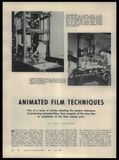
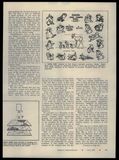
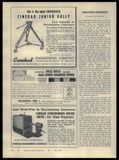
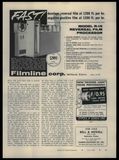
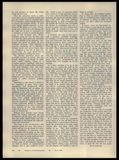
First of a series of articles detailing the modern techniques of producing animated films, from inception of the story idea to completion of the final release print.
[img]PHOTOGRAPHING an animated cartoon in Vista-Scope and color with modern multi-plane animation camera stand in Walt Disney Studio. Background panels yet to be photographed are at (1); the animated action cels at (2). The animator follows instruction sheet (3) while camera operator above maintains watch on the camera (4). (Photo copyrighted by Walt Disney Productions.)[/img]
[img]MODERN ANIMATION equipment, such as this, is used daily in the production of animated films for TV and industrial and training films. (Photo courtesy Animation Equipment Corporation.)[/img]
Mores PICTURE ANIMATION, which received its greatest impetus with the advent of Walt Disney’s “Mickey Mouse” cartoons, is today one of the industry’s important production techniques. Not only is it used in producing entertaining one-reel short subjects, but feature-length films and fantasy sequences in combination with live action as well as novel effects in titles. More recently, however, it has become an important technique for producers of teaching films, and during the past five years, the use of animated films for TV commercials and industrial projects has grown at a startling rate. Obviously, there has been created an extensive technique in this field in which the various steps in the production of animated films has become specialized, requiring trained technical personnel.
Assembly line methods are essential to successful animated cartoon production on anything approaching a commercial scale. It is technically possible for one person to do everything from the first preliminary story-sketches to photographing the finished drawings on film; but there is such an infinitude of detail involved (if you count the sketches and tracings, there are probably two or three drawings to be made for every frame in the completed film!) that the number of hands doing the work simply must be multiplied. And if the product of these many hands and brains is to be a coherent whole, their work must be coordinated – standardized – to get the desired results.
[…]